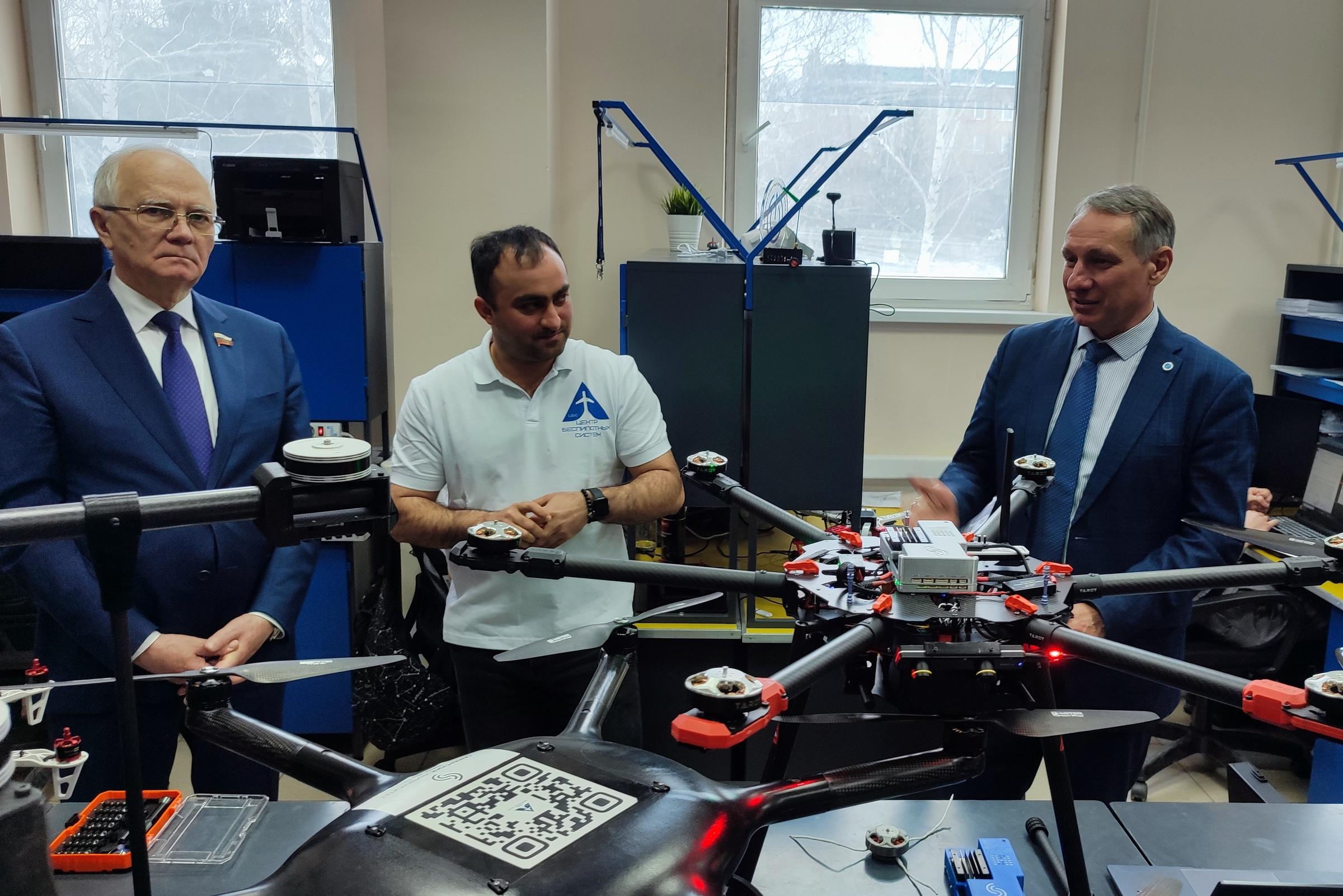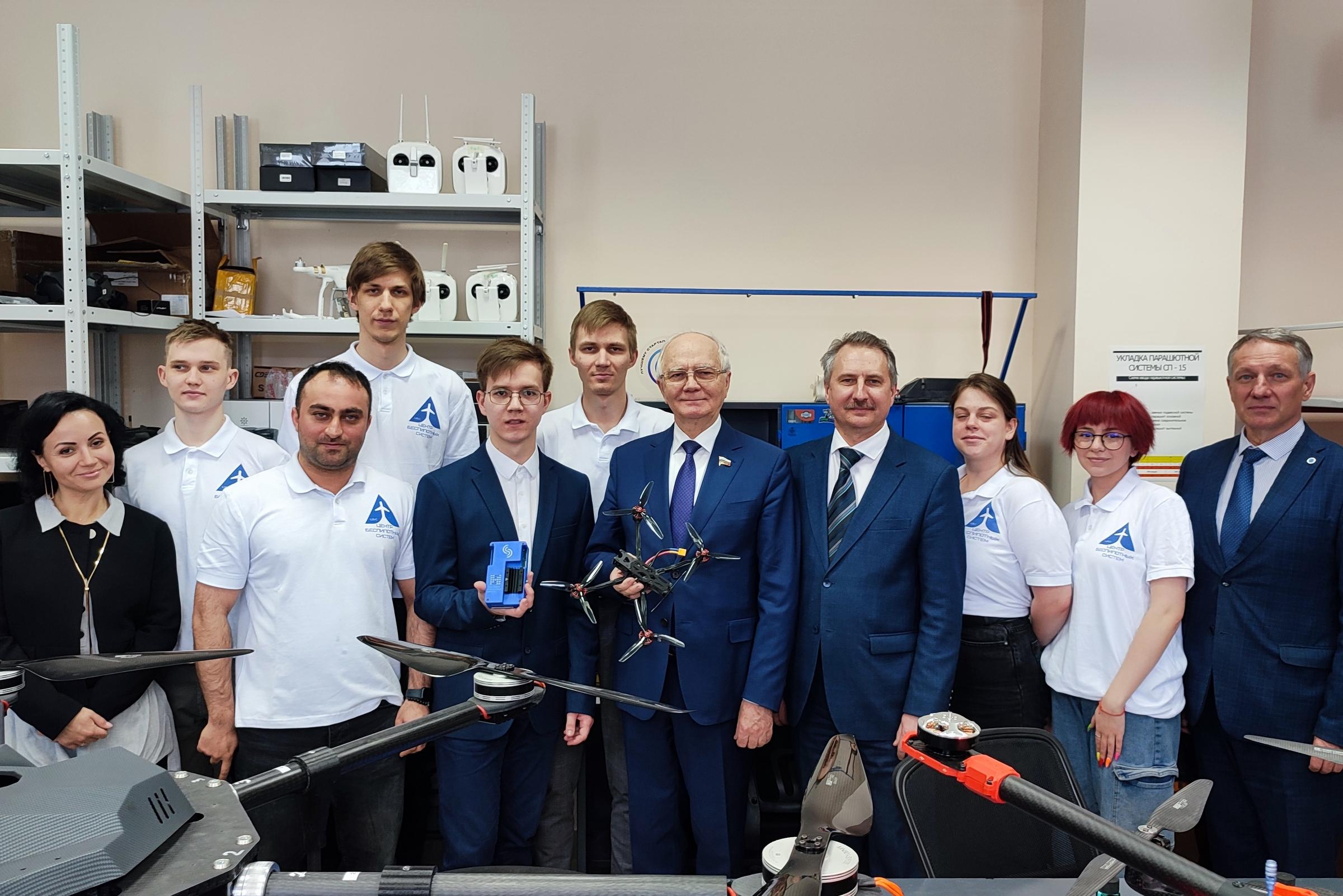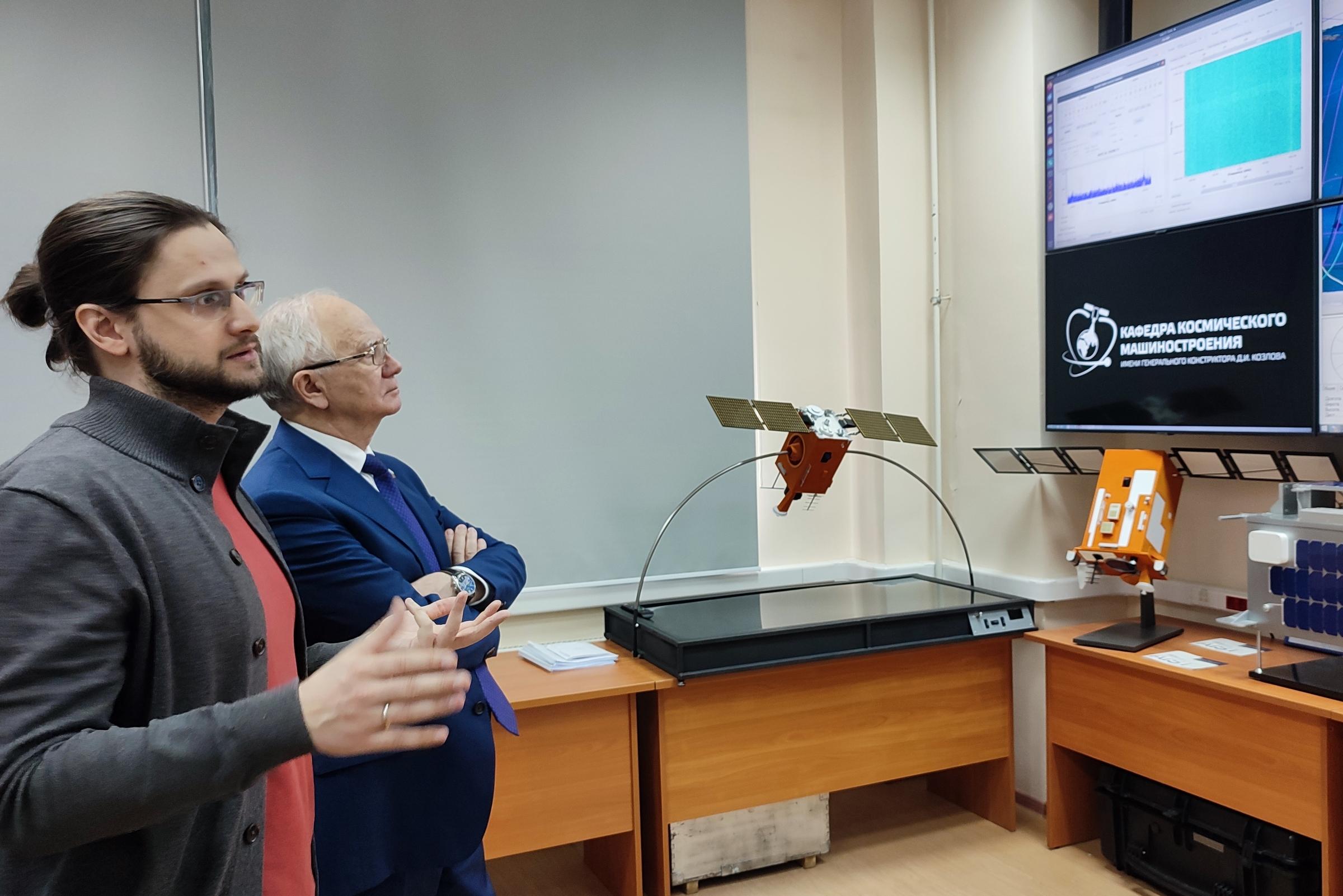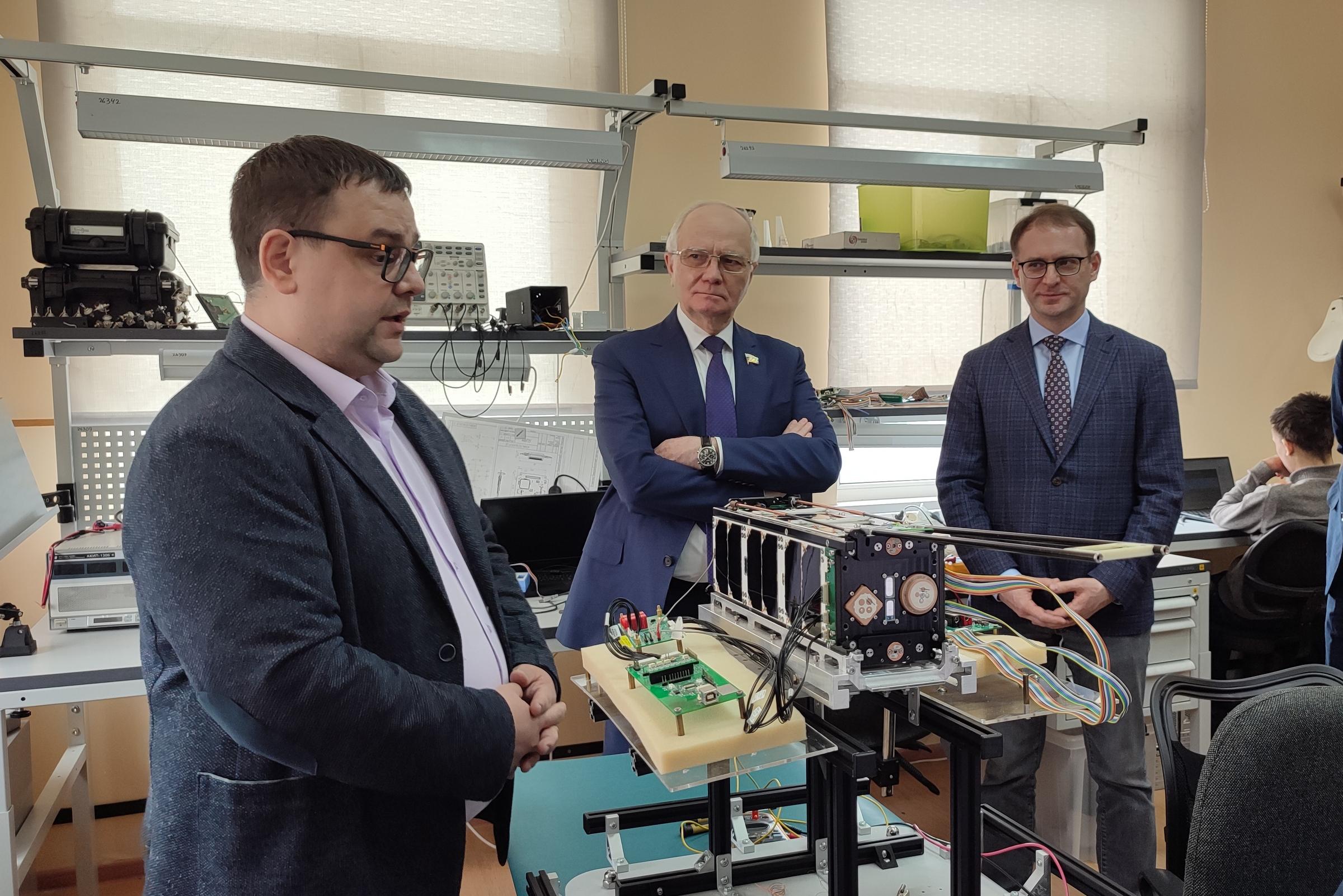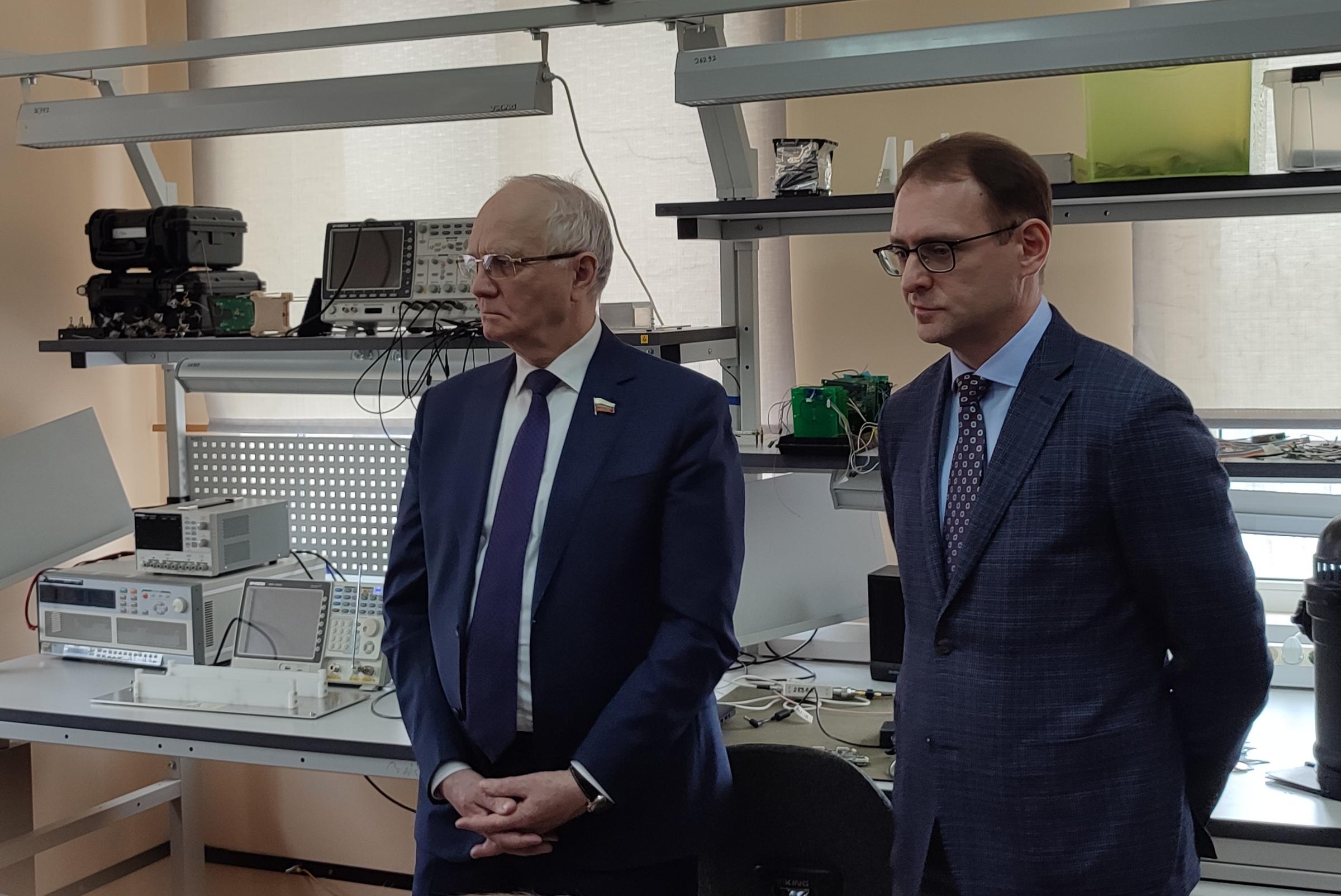The first working meeting was held at the Center for Unmanned Systems. This topic is close to Farit Mubarakshevich. After graduating from the Kazan Aviation Institute named after A. N. Tupolev (now KNITU named after A. N. Tupolev), he worked for a long time at the Central Aerohydrodynamic Institute, the leading scientific center of the USSR and Russia in the field of aircraft engineering.
David Ovakimyan, Director of the Center for Unmanned Systems, demonstrated the most interesting developments, including the simplest FPV drones, unmanned aerial vehicles of multirotor type of different dimensions, as well as aircraft-type vehicles with the possibility of vertical takeoff and landing.
Of particular interest was the hexacopter equipped with a portable gas chromatograph. Like the drone itself, this unique device was developed and tested at Samara University.
"This is an environmental drone that is able to monitor the chemical composition of the atmosphere, determining the concentrations of substances of interest to us at different altitudes. Including directly at the chimneys of enterprises, over extended infrastructure facilities, for example, over gas pipeline routes. At the same time, all information is processed directly on board the device, and the customer can receive it in real time. We already have experience in using this hexacopter for environmental monitoring," David Ovakimyan said.
Mikhail Kovalev, Vice-Rector for General Affairs, noted that the widespread use of such devices in the interests of private and public customers is hampered by gaps in the legislative and regulatory frameworks. In particular, David Ovakimyan clarified that the current state standards set environmental standards only when using ground installations. There are also legal difficulties with the organization of access for unmanned and remotely controlled vehicles to monitoring facilities.
Farit Mukhametshin offered assistance in attracting specialists capable of developing the necessary regulatory and legislative acts, and also promised assistance in their integration into the legal field.
Then the senator got acquainted with the work of the Center for Receiving and Processing Space Information. Maksim Ivanushkin, an assistant at the D.I. Kozlov Department of Space Engineering, spoke about how the University group was created from two small AIST spacecraft of the first series.
Andrey Prokofiev, First Vice-Rector – First Vice-rector – Vice-rector for R&D, drew attention to a situation unique to the practice of Roscosmos, when a technological copy of the AIST, not intended for flight, was launched into orbit six months after the flight copy and successfully worked for almost seven years.
The senator was also shown a MCC mock-up of the AIST-2D remote sensing spacecraft, a joint project of Samara University and the Progress Rocket and Space Center. Employees of the Center observe its movement in orbit on the work screen – in particular, at the time of the meeting, the satellite was flying in the area of the Bering Strait.
Farit Mukhametshin was familiarized with the process of information exchange with satellites. In particular, the specialists of the MCC CPI receive information from the cubesat SXC3-219 ISOI. It is equipped with Russia's first portable hyperspectrometer, developed under the guidance of RAS Member Viktor Soyfer, President of Samara University.
Andrey Kramlich, Associate Professor of the Inter-University Department of Space Research, spoke about the work of the International Space School. Interest in it is huge both in Russia and abroad, and the competition for participation in face-to-face classes reaches 10 people per place.
Then Andrey Kramlich showed the laboratory “Promising fundamental and applied space research based on nanosatellites.” They are now preparing for the final stage of testing of the SamSat Ionosphere cubesat, which is scheduled to launch from the Vostochny cosmodrome in 2024.
Cubesats of Samara University is involved in the study of the ionosphere. This is a promising area of research, important for ensuring stable communication within orbital groupings, as well as spacecraft with the Earth.
Andrey Kramlich drew Farit Mukhametshin's attention to the fundamental difference between Samara University is from other Russian universities participating in nanosatellite launch programs.
"Unlike most of the projects that are currently being heard, Samara University has a full set of competencies in the development, manufacture and testing of cubesats. The main contribution to their creation is made by graduate students and young candidates of sciences. But at the same time, 12–15 students, both Russian and foreign, are involved in the process,” Andrey Kramlich said.
Vladimir Bogatyrev, Rector of Samara University drew attention to the fact that now cubesats of dimensions from 3U to 16U are in the focus of attention of private Russian space companies, such as SPUTNIX and STC, with which the University cooperates. The number of nanosatellites they have developed and launched is already in the dozens.
“The creation and testing of cubesats of its own design, the inclusion of these works in the educational process allows the Samara University to produce specialists with solid practical experience in this field. Our graduates are in great demand in private space companies, which are now actively engaged in the creation and launch of small-sized spacecraft," Vladimir Bogatyrev stressed.
In the process of working communication with the scientists of the IAE, Farit Mukhametshin noted the importance of the developments of the Samara University outlined a number of measures to support promising projects.
For its part, the University has allocated a public assistant to the senator on the topic of unmanned aircraft systems. It is Sergey Smirnov, a laboratory assistant at Center for Unmanned Systems and a third-year bachelor's degree in Radio Engineering (group 6362).
 RU
RU  EN
EN  CN
CN  ES
ES 
